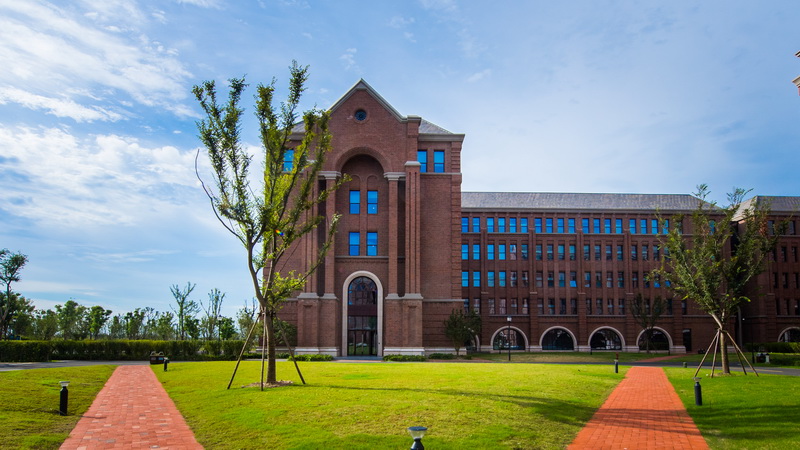Statics
TAM 211

Course Code
TAM 211
Credit
3.0 - 3.0
Course Name
Statics
Introduction
Forces, moments, and couples; resultants of force systems; equilibrium analysis and free-body diagrams; analysis of forces acting on members of trusses, frames, etc.; shear-force and bending-moment distributions; Coulomb friction; centroids, center of mass, moment of inertia, polar moment of inertia, and product of inertia; virtual work; hydrostatic pressure; applications of statics in design.
Credit is not given for both TAM 211 and TAM 210. Prerequisite: PHYS 211; credit or concurrent registration in MATH 241.
Statistical Analysis
STAT 200

Course Code
STAT 200
Credit
3.0 - 3.0
Course Name
Statistical Analysis
Introduction
Survey of statistical concepts, data analysis, designed and observational studies and statistical models. Statistical computing using a statistical package such as R or a spreadsheet. Topics to be covered include data summary and visualization, study design, elementary probability, categorical data, comparative experiments, multiple linear regression, analysis of variance, statistical inferences and model diagnostics. May be taken as a first statistics course for quantitatively oriented students, or as a second course to follow a basic concepts course.
Steel Structures I
CEE 460

Course Code
CEE 460
Credit
3.0 - 3.0
Course Name
Steel Structures I
Introduction
Introduction to the design of metal structures; behavior of members and their connections; theoretical, experimental, and practical bases for proportioning members and their connections.
3 undergraduate hours. No graduate credit. Prerequisite: CEE 360.
Structural Analysis
CEE 470

Course Code
CEE 470
Credit
4.0 - 4.0
Course Name
Structural Analysis
Introduction
plane strain.
4 undergraduate hours. 4 graduate hours. Credit is not given for both CEE 470 and ME 471. Prerequisite: CEE 360.
Structural Dynamics I
CEE 472

Course Code
CEE 472
Credit
3.0 - 3.0
Course Name
Structural Dynamics I
Introduction
<p>Analysis of the dynamic response of structures and structural components to transient loads and foundation excitation; single-degree-of-freedom and multi-degree-of-freedom systems; response spectrum concepts; simple inelastic structural systems; systems with distributed mass and flexibility. 3 undergraduate hours. 3 or 4 graduate hours. Prerequisite: CEE 360, MATH 285, and TAM 212.</p>
Structural Engineering
CEE 360

Course Code
CEE 360
Credit
3.0 - 3.0
Course Name
Structural Engineering
Introduction
<p>Analysis, behavior, and design of trusses and framed structures under static loads; member forces in trusses, shear and moment diagrams, deflections, simple applications of the force method and slope-deflection; computer applications. Prerequisite: TAM 251.</p>
Surface Hydrology
CEE 450

Course Code
CEE 450
Credit
3.0 - 3.0
Course Name
Surface Hydrology
Introduction
<p>Descriptive and quantitative hydrology dealing with the distribution, circulation, and storage of water on the earth's surface; principles of hydrologic processes; methods of analysis and their applications to engineering and environmental problems. 3 undergraduate hours. 3 graduate hours. Prerequisite: CEE 350.</p>
Systems Engineering & Economics
CEE 201

Course Code
CEE 201
Credit
3.0 - 3.0
Course Name
Systems Engineering & Economics
Introduction
Introduction to the formulation and solution of civil engineering problems. Major topics: engineering economy, mathematical modeling, and optimization. Application of techniques, including classical optimization, linear and nonlinear programming, network theory, critical path methods, simulation, decision theory, and dynamic programming to a variety of civil engineering problems.
Credit is not given for both CEE 201 and IE 310. Prerequisite: MATH 231; credit or concurrent registration in MATH 225.
Technology and Society
SOC 350

Course Code
SOC 350
Credit
3.0 - 3.0
Course Name
Technology and Society
Introduction
<p>Examines the social and cultural origins of modern technology and technological innovation; the effects of technology and its change on society. Topics include the impact of technology on beliefs and values, accommodation and resistance to change, and technology and the Third World.</p>
<p>This course satisfies the General Education Criteria in Spring 2023 for:</p>
<p>Social & Beh Sci - Soc Sci</p>
The Chinese Language
EALC 130

Course Code
EALC 130
Credit
3.0 - 3.0
Course Name
The Chinese Language
Introduction
<p>An introduction to the scientific study of the Chinese language. We will explore where the Chinese language came from, its similarities to and differences from Japanese and Korean, and how the Chinese character writing system was invented, plus what is it like now. We will explore differences among Chinese dialects (e.g., Cantonese, Mandarin, Taiwanese and Shanghai) and learn where in China these are spoken, and also explore how the Chinese language operates in the brain.





